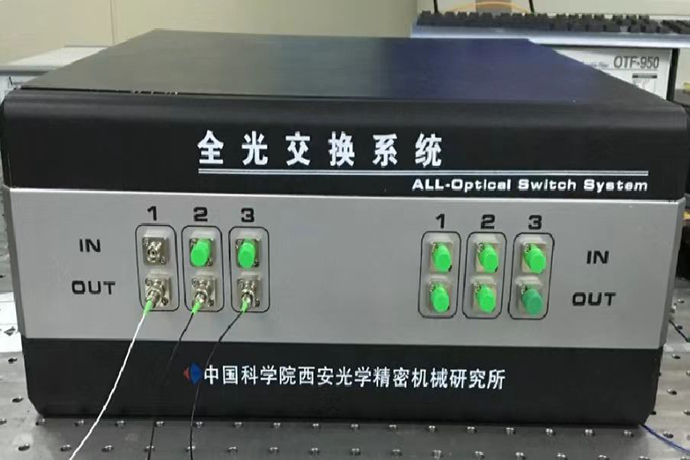All-optical switching technology breaks through traditional technological barriers, providing faster switching speed, larger bandwidth, higher reliability and security. It allows for direct processing optical signals in the optical domain, without the need for "optical-electrical" or "electrical-optical" conversions.
Traditional electrical switching technologies have forwarding delays in the millisecond or microsecond level, which cannot meet the requirements of future high-capacity satellite communication networks. All-optical switching technology effectively addressing the "electronic rate bottleneck" issue in electrical switching processing, achieving forwarding delays in the sub-microsecond or even nanosecond level.
The core technology for the allocation, forwarding, and processing of vast spatial data is also the essential path to achieving the interconnection and sharing of vast user information in the future.
A prototype of spaceborne optical switching system, independently developed by research team led by Prof. XIE Xiaoping from Xi'an Institute of Optics and Precision Mechanics (XIOPM) of the Chinese Academy of Sciences (CAS) was recently launched into space with the 'Xiguang-1' satellite, and conducted in-orbit validation.
Ground test results indicated that the satellite-based optical switching system functions properly, with complete high-spectral image information and reached "zero errors" and "zero packet loss" after ground decoding, all achieved the established goals, proving the in-orbit experiment of high-speed optical switching technology to be a success.
The research team had overcome a series of engineering technical challenges, such as the high stability of optoelectronic devices, suppression of channel crosstalk, and matching of switching links before the transition from basic research to engineering applications.
The independently developed spaceborne optical switching payload is the fundamental equipment for establishing a high-capacity optical network covering the entire globe. It can also be widely applied in future integrated space, air, and ground satellite optical communication networks.
The research team will continue to delve into on-chip all-optical switching technology, aiming to achieve ultra-fast switching and high-speed transmission. They will also pay more effort on development of low energy consumption, low cost, small size, and high reliability in exchanging payloads, according to XIE.

The Prototype of Spaceborne Optical Switching(Image by Meng et al.)
Download: